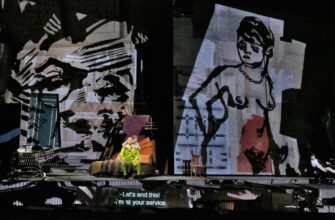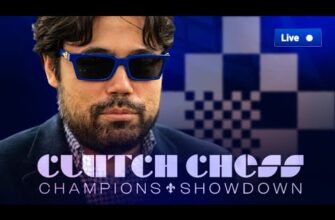Imagine stepping onto the first tee of a major golf championship. The air hums with anticipation, thousands of eyes are fixed on you, and the weight of decades of golf history presses down. This isn`t just any golf shot; it`s the opening statement of your tournament, a moment capable of defining your mindset for the entire week. For many professionals, this initial swing is less about skill and more about a profound test of nerve, a psychological gauntlet presented by what often appears to be a deceptively simple hole.
The Anatomy of an Intimidating Start
Consider the notorious Hole No. 1 at Royal Portrush, a course that recently hosted The Open Championship. Named `Hughie`s,` this 425-yard par-4 has earned a formidable reputation. Its challenge isn`t merely in its length, but in its unforgiving confines: out-of-bounds stakes line both sides of the fairway, transforming what might otherwise be a generous landing strip into a psychological `bowling alley.` Despite being 70 yards wide, the visual and mental pressure of these hazards makes it feel half that size.
Bunkers strategically placed at 275 and 290 yards eagerly await any shot lacking precision, further tightening the perceived landing area. Even the prevailing wind, often masked by tall grandstands framing the tee box, adds another layer of complexity, demanding a precise understanding of air currents that may not be immediately apparent. Players must navigate an uphill approach to an elevated, often firm green, making control from the rough exceedingly difficult. This combination ensures that the first hole is not merely a warm-up, but an immediate and rigorous examination of a golfer`s discipline and strategic foresight.
The Psychological Onslaught
The true difficulty of such opening holes transcends mere yardage or obstacle placement; it lies squarely in the mental realm. For players like J.J. Spaun, making his Open Championship debut, the sight of a narrow corridor flanked by instant penalty areas is a stark welcome. For veterans like Padraig Harrington, who famously set his alarm for 4 AM to prepare for the tournament`s very first tee shot, the experience is equally fraught. Harrington’s admitted “second thoughts” and extensive practice with a 3-iron underscore the sheer anxiety this hole can induce, even for a seasoned champion.
The history attached to these holes amplifies the pressure. Rory McIlroy`s infamous quadruple-bogey 8 on this very first hole at Royal Portrush in 2019 became part of tournament lore, a cautionary tale whispered in the lead-up to subsequent championships. When McIlroy stepped up to the tee again, the atmosphere was electric: galleries stood twenty deep, the tension palpable, an eerie silence falling before his swing. This wasn`t just a golfer attempting to hit a ball; it was a narrative playing out in real-time, a confrontation with a past demon. His relief after a bogey, famously met by a fan`s succinct “Better than last time,” perfectly encapsulated the psychological weight lifted. For many, simply avoiding disaster on the first hole is a small victory in itself.
Strategy vs. Survival: Early Consequences
The dilemma on the first tee is immediate: do you commit to an aggressive line, hoping for a birdie opportunity, or play it safe, prioritizing a clean start? Thomas Detry noted the hole demands aggression for a chance at par, despite the inherent risks. Yet, as Cameron Smith, a former Open champion, observed, the initial sense of security on the range can vanish on the tee, replaced by an urgent need for precise execution. Players choose from drivers, fairway woods, or even long irons, each selection a gamble against the conditions and their own nerves.
The statistics from such holes often tell a grim story. On one particular Thursday at Royal Portrush, Hole No. 1 averaged a score of 4.295, ranking among the toughest on the course. A mere 55% of players managed to find the fairway, and birdies were a rare commodity, outnumbered by bogeys or worse by more than four to one. A good tee shot is crucial; missing the fairway often leads to an uncontrollable second shot to a firm green, making even a par a struggle. As Jason Day summarized, “You`ve got to hit the fairway there to get yourself in good position to be able to get yourself on the green to at least give yourself a chance to birdie.” The implied irony: for the world`s best, a “chance to birdie” often translates to a scramble for par.
Beyond the First Shot: A Precursor to the Tournament
While conquering the first hole doesn`t guarantee future success, playing it well signals a player`s mental fortitude and confidence. It’s an immediate litmus test of their club selection, ball flight control, and overall mental approach under duress. Scottie Scheffler, the world`s No. 1, might miss the fairway but still salvage a par, demonstrating the elite recovery skills required. Others, less fortunate, find their early tournament hopes diminished by a single errant swing.
The first hole, with its initial emotional tee shots and ceremonial pressures in the rearview, might lose some of its climactic feel as the tournament progresses. However, its importance endures. It stands as a psychological mountain, a microcosm of the entire championship`s challenge. It`s a character test, demanding immediate focus and flawless execution from the outset. As Shane Lowry aptly put it, “I`m happy that round of golf is over with, and I`m looking forward to the rest of the week.” Yet, as Matteo Manassero wisely cautioned, “Today was not even that hard of a pin. It can play even harder.” So, do not get too comfortable just yet. The opening gauntlet, though passed, forever echoes in the player’s mind, a constant reminder of the fine line between triumph and tribulation in major championship golf.








